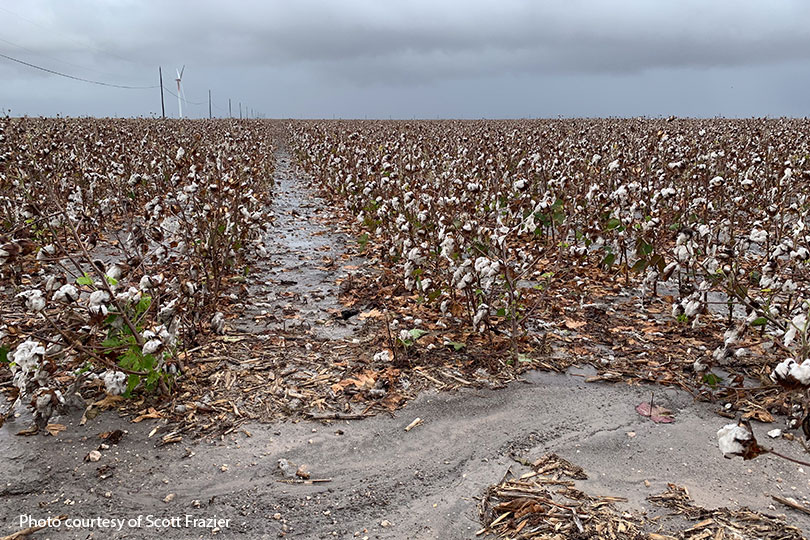By Emmy Powell
Communications Specialist
Tropical Storm Harold brought much-needed rain to South Texas right during cotton harvest.
After months of hot, dry weather, the rain is welcome, but farmers were rushing to finish harvesting cotton before the rain soaked the fields.
Scott Frazier, who farms in Nueces and San Patricio counties, said it was dry during planting season, but they were lucky to get rain to get the crop growing. He hasn’t seen rain since early April.
“The cotton really, really suffered. It looked pretty good in the beginning and then it went south in the last 90 days. It has been pretty tough,” he said.
Frazier noted about 90% of the cotton in the county had been harvested prior to the tropical storm.
“By this time, most everybody would be finished on more of a normal year,” he said. “Our harvest is dragging out a week or so later than normal. We finished harvesting on Sunday, but there’s still a few farmers out there the last couple of days that are almost done.”
Rainfall has varied across the county. Frazier said rain totals ranged from 2.25 inches to 3.5 inches.
“Farmers in the county were mostly done harvesting except for just a few fields,” he said. “I’m still optimistic they may not be what they once were, but the crop will still be good enough to harvest. For the most part, it looks like the cotton’s still on the stalk, and given a few days of dry weather, it’ll probably fluff up. I’m sure there’ll be some damage, but it won’t be a total loss.”
A large amount of rain can negatively impact cotton grade and yields.
“When cotton gets rained on right at harvest time, you have some staining of the cotton, and it affects the grade quite a bit when it gets wet and kind of gets stringy. Some of it’ll fall out on the ground, and you’ll lose that,” he said.
But the recent rains have left Frazier feeling optimistic for the next season.
“For the most part, it’s a good thing. If you’re one of the unlucky few who still have a little bit to harvest, it’s a pretty sick feeling. But overall, it’s probably going to do more good for the start to next year’s crop than what harm it’s doing to this year’s crop,” Frazier said.


Leave A Comment